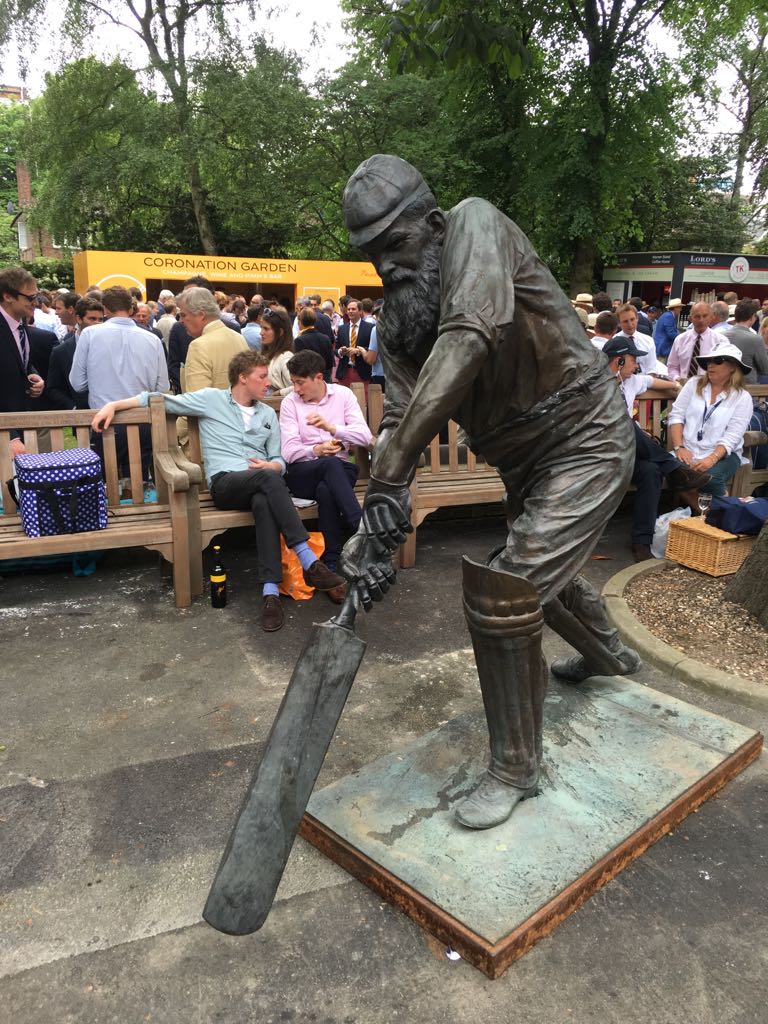The end of the 2013 English county season had an even more poignantly fin de siècle feel than usual for supporters whose memories went back not just to an era before DRS and sponsored tea intervals (good grief, even at Lord’s) but to an epoch before coloured clothing. The match between Hampshire and Essex at the Ageas Bowl in Southampton saw the last appearance in first-class cricket of the former Hampshire, Surrey and Lancashire allrounder Trevor Jesty. He was retiring as an umpire at the age of 65.
‘Hampshire, Surrey and Lancashire’ is still difficult to accept for a Hampshire supporter such as myself. Jesty was a Hampshire man, born in Gosport. I actually remember his first day as a Hampshire player, oddly enough also against Essex, at the United Services Ground in Portsmouth in August 1966. He opened the bowling with Derek Shackleton but was quickly and rather improbably replaced by the captain, the great Barbadian Roy Marshall – my first cricketing hero.
By the early 1970s Jesty was established as an extremely useful allrounder – a stylish and forceful middle-order batsman, an always tidy and sometimes penetrative medium-pace bowler and a splendid fielder anywhere. He was a regular in the side that won the Championship in 1973. In 1976 he really broke though as a batsman and became one of the most consistent and formidable run-scorers on the county circuit. His sumptuous offside play was reminiscent of his mentor, the incomparable Barry Richards. In 1982 Jesty made eight first-class hundreds but still failed to make it into Bob Willis’ Ashes squad. He never played a Test match. In 1984 Mark Nicholas was preferred as Hampshire captain and Jesty moved to Surrey the next year. Things were never quite the same there, nor at Lancashire where he moved in 1988. One could not escape the feeling of a talent unfulfilled.
Jesty’s first game in 1966 was Trevor Bailey’s last as captain of Essex. Bailey had been a major figure in English cricket since the early 1950s. His notoriously obdurate batting and his bustling fast-medium bowling gave him a central role in one of England’s greatest ever sides. Although a player of a very different style Bailey was the Stuart Broad of his day. He would stop at nothing to advance his country’s interests. Funny that he never became captain.
Bailey made his debut for Essex in 1946 but his first big game was against the Australians at Southend in 1948, a game made memorable by Don Bradman’s team scoring 721 in a day. Four batsmen made hundreds, Bradman leading the way with 187. Keith Miller, who had a different view of life from his captain, was rather ostentatiously bowled first ball by Bailey.
Many summers prior to that, Bradman played his first Test at Brisbane’s old Exhibition ground in 1928-29. Batting at No. 7, he made 18 and 1, and was dropped for the first and last time. England, led by Percy Chapman, won by 675 runs and went on to win the series 4-1. England also dropped a batsman – not for the first time but for the last time – the Hampshire left-hander Phil Mead. Mead had a remarkable career but as far as England appearances were concerned a slightly disappointing one, though not as disappointing as Jesty’s. Unlike Jesty he was not a conventionally attractive batsman and frequently lost out to his fellow left-hander Frank Woolley despite averaging 49 in Tests – at least 60 in today’s currency – as opposed to Woolley’s 36. But he scored 182 not out against Warwick Armstrong’s Australians at The Oval in 1921, a score not exceeded by an Englishman against Australia in England until 1938. And Mead made more runs (48,892) and more centuries (138) for Hampshire than anyone else has ever made for any team in first-class cricket. That is a record that one can say with some confidence will never be broken.
When Mead arrived in Australia in 1928 he was introduced at an official reception with a comment that people might remember his father who had toured in 1911-12. In fact that was Mead himself who, as a much younger man, had played in all five Tests, in one of England’s most famous Ashes series victories – their last until Chapman led them to victory at the Oval in 1926. Central to their success in the earlier campaign had been the batting of the opening pair, Jack Hobbs and Wilfred Rhodes, who made over 1000 runs between them in the series.

Statue of W G Grace at Lords. Photo by Bill Ricquier
Both had achieved great things on previous visits to Australia, Rhodes as a slow left-arm bowler. Indeed he had begun his Test career at the other end of the batting order, coming in at No. 10 against Australia at Trent Bridge in 1899. Opening the innings for England in that game was W.G. Grace. He made 28 and 1 and never played again. His Test figures do not bear comparison with those of today’s stars but no serious student of the game would deny that his contribution – he basically invented batting as we know it – was unparallelled.
I have always wanted to read an article linking my favourite cricketer Trevor Jesty, with WG and the Don. And now I have.
Bill Ricquier, 24/10/2013
This article was published in ESPN Cricinfo: http://www.espncricinfo.com/thestands/content/story/682111.html
Feature image: Informal group shot of Hampshire’s 1973 Championship winning team
Share this Post

